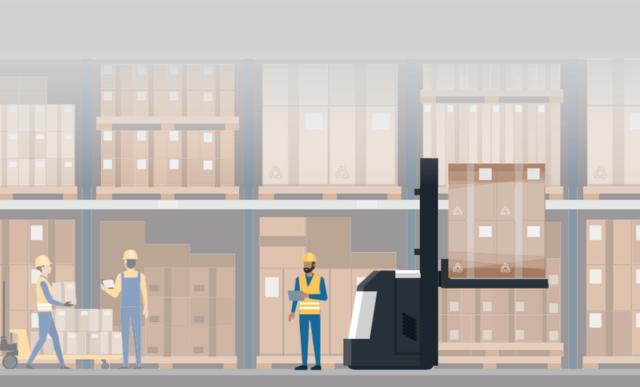How SAP and KPMG Turn Tariff Turmoil Into A Win For Businesses
Meet the Authors
Key Takeaways
Shifting from a reactive to a proactive global trade strategy is essential for organizations to navigate complex tariffs effectively, utilizing technology like SAP GTS to enhance compliance and uncover savings.
Automation through SAP GTS significantly reduces the risk of costly errors in customs documentation and duty calculations, enabling businesses to maintain compliance and improve operational efficiency.
Companies should actively leverage specialized trade programs such as Free Trade Agreements (FTAs) and Foreign Trade Zones (FTZs) to identify savings opportunities, enhancing financial benefits through automated trade management processes.
The world of tariffs comprises ever-shifting regulations, complex paperwork, and unpleasant surprises that can impact the balance sheet. According to a whitepaper by SAP and KPMG, in 2024, tariff-related inefficiencies were estimated to cost U.S. importers billions of dollars. Moreover, with U.S. manufacturers reporting cost increases of up to 15% on raw materials due to new duties, just getting by is no longer a viable strategy.
Tariffs in today’s business environment have changed the game. We are seeing heightened customs scrutiny, reciprocal tariffs on over 60 countries, and an accelerated timeline for policy shifts. Therefore, if an organization’s global trade strategy is still running on spreadsheets and reactive fixes, it not only risks overpayments and delays but is actively giving up a competitive advantage.
From Reactive to Proactive
According to Frances Xing, Principal, Trade & Customs, Global Trade Technology at KPMG, one of the authors of the white paper, “In today’s turbulent trade environment, simply reacting to tariffs is a recipe for failure.”
Explore related questions
Xing adds, “The real strategic advantage comes from using technology like SAP GTS to stay compliant, uncover savings, and build a more resilient supply chain. It’s about turning regulatory complexity into a strategic edge.”
This mindset shift is critical as the solution lies in a robust technological core complemented by strategic guidance. SAP Global Trade Services (GTS) provides that core, helping businesses automate and streamline their entire trade management process.
Some of the capabilities provided by SAP GTS to help businesses navigate tariffs include:
- Automates Tariff Classification: SAP GTS manages Harmonized System (HS) codes globally, minimizing human error that can lead to costly overpayments or penalties.
- Maximizes FTA Savings: It proactively identifies opportunities to lower costs by utilizing Free Trade Agreements (FTAs), while automating the end-to-end trade preference management processes to ensure complex rules-of-origin requirements are met and the business qualifies for lower duty rates.
- Enables What-If Planning: SAP GTS allows companies to run simulations on future tariff impacts, helping them forecast cost increases and explore alternative sourcing strategies before a crisis hits.
- Optimizes Special Programs: It provides automated, compliant solutions for leveraging Foreign Trade Zones (FTZs) to defer or eliminate duties and streamlines the data-intensive process of duty drawbacks.
Where Technology Meets Expertise
Still, technology is only half the equation. KPMG’s Trade and Customs practice brings the vital human layer, offering deep cross-functional proficiency across SAP solutions. “KPMG brings tools like our AI-powered Tariff Modeler to support the powerful engine of SAP GTS and helps ensure it is installed, intelligently configured, standardized, and integrated to meet the organization’s specific business challenges,” said Xing.
It’s this collaboration that helps companies move from being rule-takers to strategic players, turning the complex web of global tariffs into a source of efficiency and opportunity.
What This Means for SAPinsiders
Shift to proactive strategic planning. A proactive strategy means fewer unexpected supply chain disruptions and the ability to anticipate changes through planning and what-if simulation capabilities within a tool like SAP GTS. This enables logistics businesses to evaluate the potential impact of future tariffs on shipping lanes and sourcing, thereby building a more resilient and agile supply chain. For SAPinsiders in the finance space, a proactive approach uses integrated systems to forecast cost increases and model alternative sourcing strategies. This approach enables organizations to strategically manage tariff exposure, protect their profit margins, and enhance cash flow.
Automation is the best defense against costly errors. Automation translates to speed and reliability. For example, SAP GTS automates the creation of customs documentation, reducing paperwork errors and facilitating faster customs clearance. The ability to file electronically with customs authorities and integrate with brokers enhances data accuracy and visibility across the entire process. Additionally, automation is also a powerful risk mitigation tool. Platforms like SAP GTS automatically adjust duty calculations when tariff rates change, ensuring the business always pays the correct amount and remains compliant.
Actively seek savings with specialized trade programs. The whitepaper highlights that many companies miss significant savings because they lack the tools to effectively manage programs such as FTAs, FTZs, and duty drawbacks. These programs offer substantial financial benefits that SAP GTS can identify automatically. It can also capture the necessary import and export data directly from customs filings and ERP transactions and accelerate the data-intensive process of duty drawbacks.
Learn more: SAP Global Trade Services
Some or all the services described herein may not be permissible for KPMG audit clients and their affiliates or related entities.






